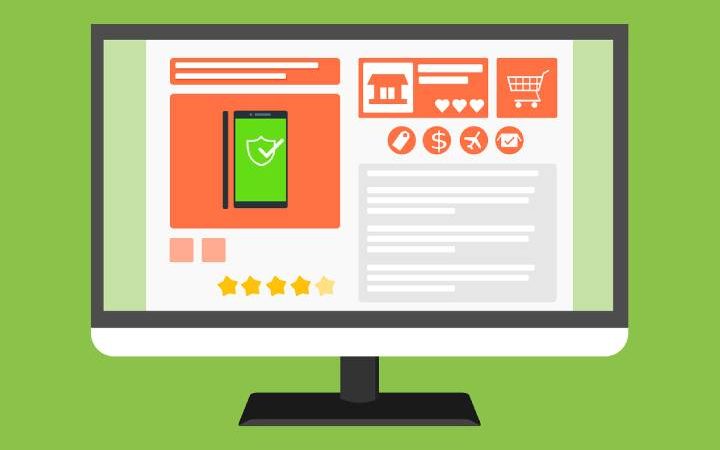The Four P’s Of Marketing Applied To An Online Store

The four Ps make up a mnemonic rule to remember the four fundamental concepts that completely and comprehensively surround marketing and all of its practical operations. These four P’s are product, point of sale, promotion and price. In this article, we explain, with practical examples, how to apply these concepts to an e-commerce page, like the one you can do with an Online Store, which includes numerous tools (discount coupons, cross-selling.)
Table of Contents
Product
The product can be tangible like a vehicle, a mobile phone, some shoes, etc., or intangible like a consultancy service, software, hosting, etc., and that can be perceived only indirectly. In any case, the product that hits the market will go through different stages: initial growth, stability and a drop in sales. Hence the importance of investigating its life cycle before putting it up for sale.
What Should We Ask Ourselves About The Product
When developing and introducing a product on the market, we should ask ourselves some questions that will help us bring to fruition what we want to sell:
- What does the customer receive from the service or product?
- How and when will you use it?
- What features will the product have to satisfy the customer?
- Have we added all the features?
- Have we added any more, and that is unnecessary?
- Do we have a catchy name for the product?
- How do we visualize it (sizes, colors and other characteristics?
- What differentiates us from the competition?
Point Of Sale
Another of the four P’s of marketing applied to an online store is the point of sale or the place where we will sell the product. Obviously, the point of sale for an online store is the Internet. However, if we also have a physical store, conducting a market study of the area would be advisable before opening our business.
Distribution Strategies
There are many distribution strategies, for example:
- Extensive. It is the one that tries to cover the most significant number of points of sale. Ideal for basic or first need products.
- Intensive. It is the one that seeks the distribution of the product in an equivalent commercial branch.
- Exclusive. Carefully choose the points of sale to increase the prestige of the brand. We have more control and more margin. It is often used for high-end products.
- Selective. Restrict the number of products, either by philosophy or company image, or based on geographical perspectives.
What Should We Ask Ourselves About The Point Of Sale
To develop our distribution strategy, we could ask ourselves these questions:
- Where do customers look for our service or product?
- Is it possible to sell the product online?
- How do we access distribution channels?
- How does the competition distribute?
Price
The price is the final cost the user will pay for the product, and it is one of the main items for sale and determines our company’s profit. The advantage that we have, being an online store, is the considerable savings in some expenses that will influence the final price of the product, especially those related to marketing, since we do not need to hire vendors nor pay the rent of the physical establishment. If we are a new business with new products, it is unlikely that customers will pay a high price for them, so adjusting their prices should be part of our marketing strategy.
Strategies
Here are the top five pricing strategies:
- Market penetration. It aims to conquer potential clients by offering more contained prices on the products or services we offer initially.
- Premium. This strategy sets a price above the average market price and makes consumers think that our product has added value compared to the competition.
- Skimming. The first phase consists of entering the market with a high price, attracting the less price-sensitive segments, lowering it considerably and reaching the rest of the segments. This is more effective if you have little competition.
- Psychological prices. It is to fix a product and that the client acts by emotion rather than logic. For example, instead of setting a total price, set a lower price with decimals: €99.99 instead of €100.
- In a batch. They sell a group of products at a lower price than when purchased individually.
What Should We Ask Ourselves About The Price
The questions we should ask ourselves before setting a price could be the following:
- How much does it cost us to produce the product or service?
- What value does the customer perceive in the product?
- If we lower the price, could we increase the market share?
- Can we maintain the product’s price compared to that of our competitors?
Promotion
Finally, promotion is another of the four Ps of marketing applied to an online store. This is the way to communicate the sale of a product or service, intending to disseminate the product and persuade the consumer to make a purchase.
Promotion Elements
The promotion consists of elements such as:
- Sales organization. It deals with the sale and distribution of a product or service.
- Public Relations. Manages relations with the public through favorable publicity, good corporate image, controlling everything that is said about our company.
- Advertising. Any paid way to present and promote the product by an identified sponsor.
- Sales promotion. Short-term incentives that encourage the purchase of a product or service.
What Should We Ask Ourselves About Promotion
We should ask ourselves some questions if we want to create a good product promotion strategy:
- How do we send promotional messages to our potential buyers?
- When is a good time to promote our product?
- Through what means can we reach our clients (radio, television, AdWord)?
- Would we include the RRSS in our promotion strategy?
- What does our competition do to promote the product?






